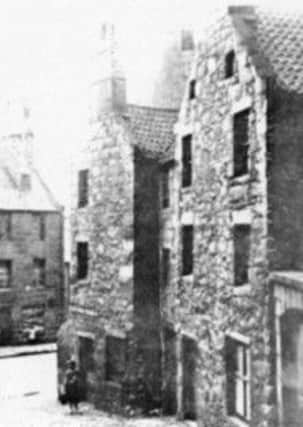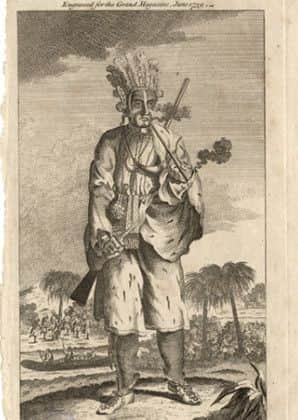How Aberdeen children were sold into slavery


In the 18th Century, records show that a child stored in one of the city’s holding houses until the ships were full enough to sail could be sold for £16 a head.
And perhaps darkest of all is that it was the city leaders - also known as burgesses or baillies - who were behind the grim trade, in cahoots with the ship masters who docked at Aberdeen’s bustling harbour.
Advertisement
Hide AdAdvertisement
Hide AdGraeme Milne, education officer at Aberdeen Museums and Galleries, said: “Aberdeen had obviously been a trade city for many years. The city had strong ties with the Americas, where a lot of Scots were using slaves.”


Mr Milne said the kidnap and sale of children was not exclusive to Aberdeen but that it was clear a number of high-profile civic leaders were driving the business.
“You are talking about the period around Culloden - these were pretty lawless times.
“People were trying to get rid of the waifs hanging around the streets.
“A lot of the countryside in Aberdeenshire had very little work and young people were sent into the city.
“But often they ended up being exploited and often by the burgesses of the city. Certainly, there were important people in the city who were involved in this.
“The burgesses and the ship masters were all in it together, and they got their cut for every child sold.
“The burgesses had a couple of holding houses in the city, where the kids were put before being shipped off.”
Advertisement
Hide AdAdvertisement
Hide AdMr Milne said there were two or possibly three holding houses in Aberdeen at that time - one at the Tolbooth prison, another at The Green and a third said to be on the shore at Torry.
Kids were kept amused by dice games - with a piper said to have been hired to drown out the noise of the young prisoners.
Some parents are known to have tried to get their children back, Mr Milne said.
He added: “The children would be held captive until there were enough of them to fill whatever capacity the ship had. You are talking about big ships here and then the harbour would have been much shallower than it is today.
“It could be the case that the children were rowed out to board.”
Perhaps the most famous captive was Peter Williamson, who became known as Indian Peter.
From Aboyne in Aberdeenshire, Peter was kidnapped in Aberdeen in 1743 aged just 10.
He had been sent to live with his aunt but was scooped up while out playing and sent across The Atlantic on The Planter, with around 80 other young people aged between seven and 14.
Advertisement
Hide AdAdvertisement
Hide AdIt was an 11-week voyage but The Planter ran into difficulty as it approached Cape May in Delaware. The crew abandoned the vessel, fearing it would sink, with the children still on board.
Most of the young children, however, survived the crossing and the next day were off-loaded and taken for sale.
There, he was bought by a Hugh Wilson on Perth and the two lived in relative harmony. After his master’s death, Peter married into money but was attacked by Delaware Indians at his new marital home in Pennsylvania.
It is said he was enslaved again after being tied to a tree with his hands and feet burnt. After surviving the attack, the Delaware let him live - and used him as their own for several months.
After escaping, Peter discovered his wife and died and he went on to fight against the French and their Indian allies but was later captured in 1756 at the British surrender at Oswego, near New York,
He was shipped back to England as part of a prisoner exchange and set to work on exposing the trade of the powerful men of Aberdeen who had sent him to America.
It is said he walked from Plymouth to Aberdeen on foot, telling his story on the way and publishing a small book with the help of some sympathisers.
To promote his story he would dress as a native American Indian and dance to the crowds to drum up in interest in the book.
Advertisement
Hide AdAdvertisement
Hide AdMr Milne said; “The book was quite fanciful in parts and certainly some of the stories may have become embellished along the way, but he did get quite a bit of attention.”
In 1758, Indian Peter arrived in Aberdeen and - as word of his claims spread - was brought to trial for the “scurrilous and infamous libel” of some of the city most influential men.
Found guilty, Peter’s books were burned and he was put in jail until he signed a confession that his book was based on lies.
Banished from Aberdeen, Peter was on the move again - and he opened a coffee shop in Edinburgh’s Grassmarket and in time his book was reprinted. He was persuaded to sue for the damage inflicted by the Aberdeen elite and he won his case in the Court of Session.
Presented to the court was the account book of William Fordyce and Co, with Mr Fordyce a town baillie of Aberdeen.
The log showed the money raised by shipping the children - and Peter’s name was included in the paperwork
He was awarded 200 pounds damages and 100 guineas cost.
Peter made his home in Edinburgh and set up several enterprises, including a tavern in Old Parliament Close. He also set up a weekly paper and printed the first street guide to the city.
He died in 1799 and buried in Old Calton Cemetery, with it said he said he was buried in his favourite moccasins.